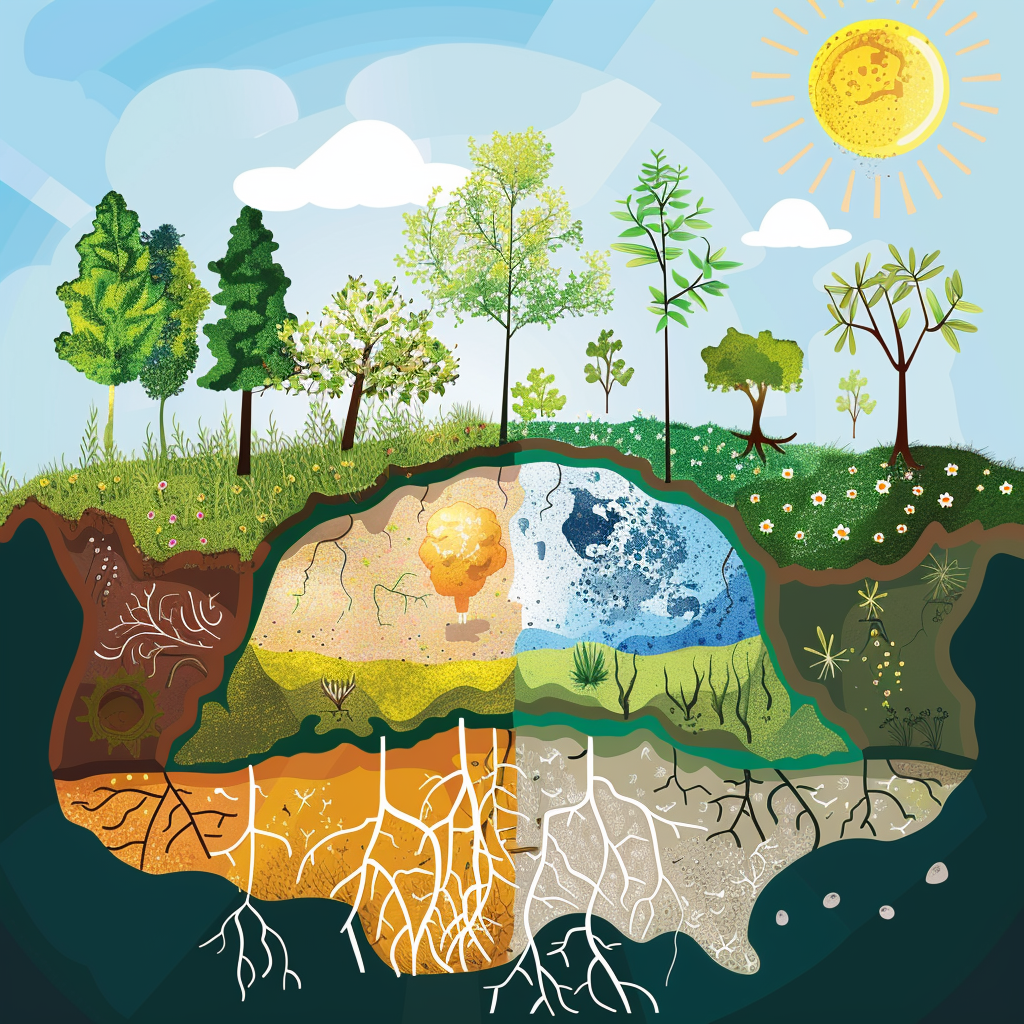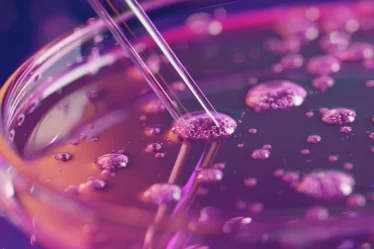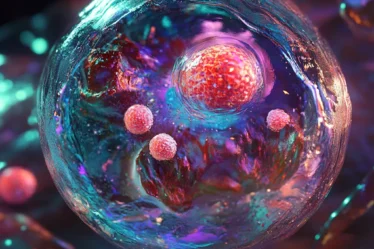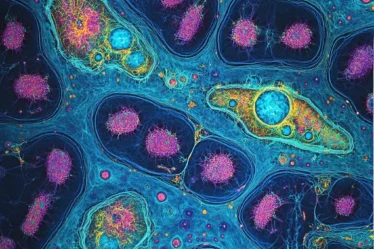
Nutrient cycling keeps ecosystems healthy by moving vital elements like carbon, nitrogen, and oxygen through air, water, soil, and living things. The carbon and nitrogen cycles supply plants and animals with essential nutrients. Processes such as photosynthesis and decomposition put these nutrients back into the environment. Let’s dive into how these cycles work and why they matter.
If you’re looking to improve your study habits, our blog on how to learn efficiently has some great tips. For those focusing on reading, we’ve got techniques for learning to read that are super helpful. We also discuss the pros and cons of online learning and provide an honest look at homeschooling benefits and challenges. Our CV writing guide is a must-read if you’re updating your resume. You can find all these and more in our learning tips section.
Nutrient Cycling and Biogeochemical Cycles: Key Takeaways
In a hurry? Don’t worry. Our critical takeaways on nutrient cycling and biogeochemical cycles will give you a quick and easy summary of the main points:
🟠 Nutrient Cycling refers to moving elements like carbon, nitrogen, and oxygen through ecosystems, involving photosynthesis, respiration, and decomposition.
🟠 Biogeochemical Cycles connect living organisms, soil, water, and the atmosphere, ensuring that nutrients are available for various biological and chemical processes.
🟠 Human Impact on nutrient cycles, including changes from fossil fuel use and deforestation, can disrupt these natural processes, affecting ecosystem health and stability.
What is a Biogeochemical Cycle
Biogeochemical cycles are the processes that move chemical elements between living organisms, geological formations, and the atmosphere. Key cycles include carbon, nitrogen, oxygen, and water cycles. These cycles transfer elements between ecosystems and the environment, recycle essential elements, and support ecosystem functions.
Interaction Between Earth’s Spheres in Nutrient Cycles
Nutrient cycles involve the movement of elements like nitrogen and water through the biosphere, lithosphere, hydrosphere, and atmosphere. In the nitrogen cycle, nitrogen gas from the air is converted by soil bacteria into forms plants can use. The water cycle involves water movement between the atmosphere and the Earth’s surface through evaporation and precipitation. These cycles impact nutrient availability, soil fertility, and climate.
Major Biogeochemical Cycles
| Cycle | Key Processes | Main Reservoirs | Human Impact |
| Carbon Cycle | Photosynthesis, Respiration, Decomposition | Atmosphere, Oceans, Soil, Living Organisms | Fossil fuel burning, Deforestation |
| Nitrogen Cycle | Nitrogen Fixation, Nitrification, Denitrification | Atmosphere, Soil | Fertilizer use, Industrial emissions |
| Oxygen Cycle | Photosynthesis, Respiration, Decomposition | Atmosphere, Biosphere | Air pollution, Deforestation |
| Water Cycle | Evaporation, Condensation, Precipitation | Oceans, Rivers, Atmosphere | Water pollution, Overuse of freshwater resources |
If you find nutrient cycling and biogeochemical cycles challenging, don’t worry! Personalized tutoring or interactive biology lessons make these concepts more straightforward. Explore more biology topics and broaden your knowledge with our free Biology blogs.
Key Components of Nutrient Cycles
Identifying Primary Nutrients in Ecosystems
Primary nutrients, or macronutrients, like nitrogen (N), phosphorus (P), and potassium (K), are crucial for plant growth and metabolism. Nitrogen is vital for amino acids and proteins, phosphorus for energy transfer through ATP, and potassium for enzyme activation and water regulation. Plants absorb these nutrients from the soil, entering the food chain through herbivores and carnivores. Without these nutrients, ecosystems would struggle to support life.
Primary Nutrients:
- Nitrogen (N): Essential for amino acids, proteins, and chlorophyll.
- Phosphorus (P): Crucial for ATP, DNA, and cellular energy transfer.
- Potassium (K): Important for enzyme activation and water regulation.
Secondary Nutrients and Their Role in Nutrient Cycles
Secondary nutrients like calcium (Ca), magnesium (Mg), and sulfur (S) are essential for healthy ecosystems but needed in smaller amounts. Calcium supports cell wall structure, magnesium is central to chlorophyll, and sulfur is key for protein synthesis. These nutrients cycle similarly to primary nutrients but play more specialized roles, maintaining structural integrity and metabolic functions in organisms. They are critical for ecosystem health and stability.
Secondary Nutrients:
- Calcium (Ca): Supports cell wall structure and stability.
- Magnesium (Mg): Central to chlorophyll and photosynthesis.
- Sulfur (S): Vital for protein synthesis and enzyme function.
Oxygen Cycle: Photosynthesis and Respiration
The oxygen cycle revolves around photosynthesis and respiration. Plants and algae use sunlight to turn CO₂ and water into glucose and oxygen during photosynthesis, releasing oxygen into the air. Animals and other organisms use this oxygen for respiration, breaking down glucose to release energy, CO₂, and water. This continuous exchange stabilizes atmospheric oxygen levels and supports life, with photosynthesis supplying oxygen for breathing and respiration providing CO₂ for plants.
Decomposers’ Role in Oxygen Recycling
Decomposers, like bacteria and fungi, are essential in the oxygen cycle. They break down dead plants and animals, releasing CO2 into the air and turning dead material into plant nutrients. Decomposers help recycle nutrients, stop waste buildup, and keep oxygen levels steady. They also break down plant and animal matter, which supports the environment. Without decomposers, the oxygen cycle would be thrown off, causing problems for soil and ecosystems.
Human Impact on the Oxygen Cycle and Its Effects
Human activities like deforestation and burning fossil fuels increase CO₂ levels and reduce oxygen production, disrupting the oxygen cycle and contributing to climate change. We must reduce emissions, protect forests, and adopt sustainable practices to maintain the oxygen cycle.
Finding concepts like nutrient cycling and oxygen cycle intricate? A biology tutor can offer personalized lessons that cater to your learning style, making complex biological processes accessible and engaging.
The Carbon Cycle and Carbon Reservoirs
Carbon reservoirs, including the atmosphere, oceans, soil, and living organisms, store and release carbon, driving the carbon cycle. The atmosphere holds CO₂, oceans absorb and release CO₂, soil stores organic carbon from decaying matter, and living organisms use carbon for growth and release it through respiration. These reservoirs interact dynamically, regulating carbon availability and influencing climate. Oceans, for instance, can absorb excess CO₂, mitigating climate change to some extent.
Photosynthesis and Respiration in Carbon Movement
Photosynthesis and respiration are key processes in the carbon cycle. Photosynthesis, carried out by plants, algae, and some bacteria, captures CO₂ from the atmosphere and converts it into glucose and oxygen using sunlight, storing carbon in plant biomass. Respiration by animals, plants, and microorganisms breaks down glucose for energy, releasing CO₂ into the atmosphere. This continuous exchange keeps atmospheric carbon levels balanced and sustains life.
Decomposition and Its Importance in the Carbon Cycle
Decomposition recycles carbon in ecosystems by breaking down dead organisms. Decomposers like bacteria and fungi release CO₂ and nutrients into the environment, converting organic matter into simpler compounds for plant use. This process returns carbon to the atmosphere and enriches the soil, enhancing nutrient availability and supporting plant growth. Without decomposition, carbon would remain locked in dead matter, disrupting the carbon cycle and reducing nutrient availability.
Human Influence on the Carbon Cycle and Climate
Human activities, such as burning fossil fuels and deforestation, have disrupted the carbon cycle. This releases large amounts of CO₂, contributing to global warming. Fewer trees mean less CO₂ absorption, which amplifies the greenhouse effect and leads to climate change, affecting weather, sea levels, and biodiversity. We must reduce fossil fuel use, improve energy efficiency, and protect forests to mitigate this.
Explore biochemistry and the differences between organic and inorganic chemistry.
The Nitrogen Cycle and Nitrogen Fixation
Nitrogen fixation transforms inert atmospheric nitrogen (N₂) into ammonia (NH₃) or related compounds that plants can use. This process is carried out by nitrogen-fixing bacteria such as Rhizobium in legume root nodules and free-living bacteria like Azotobacter. Lightning can also fix nitrogen by converting N₂ into nitrates. These fixed nitrogen forms enter the soil and support plant growth. Since atmospheric N₂ is chemically inert, nitrogen fixation is necessary to convert it into a usable form for organisms.
Nitrification and Denitrification in Soil Processes
Nitrification and denitrification are essential soil processes in the nitrogen cycle. Nitrification converts ammonia to nitrites (NO₂⁻) and then to nitrates (NO₃⁻) using nitrifying bacteria like Nitrosomonas and Nitrobacter. Plants absorb these nitrates as nutrients. Denitrification (denitrifying bacteria such as Pseudomonas) converts nitrates back into N₂ gas, releasing it into the atmosphere. Denitrification occurs under low-oxygen conditions and helps regulate nitrogen levels in the soil, preventing excess accumulation and maintaining balance.
Nitrogen’s Role in Plant Growth and Development
Nitrogen is vital for plant growth, being a component of amino acids, proteins, and chlorophyll, which are crucial for photosynthesis. Plants absorb nitrogen as ammonium (NH₄⁺) and nitrates (NO₃⁻) from the soil. Adequate nitrogen promotes robust growth, increases yield, and enhances crop quality. Nitrogen deficiency can cause stunted growth, yellowing leaves, and reduced productivity, highlighting its importance in agriculture and ecosystem health.
Human Impact on the Nitrogen Cycle
Human activities like synthetic fertilizers, fossil fuel combustion, and industrial processes have significantly impacted the nitrogen cycle. These activities increase nitrogen levels in soil and water, causing nutrient imbalances, pollution, eutrophication, algal blooms, and oxygen depletion. Managing human impact involves optimizing fertilizer use, improving agricultural practices, and reducing emissions to protect the nitrogen cycle.
Mineralization Releases Essential Elements
Mineralization is the breakdown of organic matter by microorganisms, releasing essential nutrients like nitrogen, phosphorus, and sulfur in forms that plants can absorb. This process converts complex organic compounds into simpler inorganic molecules, replenishing soil nutrients, supporting plant growth, and maintaining soil fertility. It is vital for nutrient cycling and ecosystem productivity, ensuring a continuous supply of elements plants and microorganisms need. Without mineralization, nutrients would stay trapped in organic forms, becoming unavailable for living organisms.
The Water Cycle: Evaporation and Condensation
Evaporation and condensation drive water movement between the Earth’s surface and atmosphere. Evaporation occurs when the sun heats water in oceans, lakes, and rivers, turning it into a vapor that rises into the atmosphere. Condensation happens when this vapor cools and forms clouds. These processes are essential for global water distribution and regulate weather patterns and climate.
Distribution of Water Through Precipitation and Collection
Precipitation, including rain, snow, and sleet, returns water from the atmosphere to the Earth’s surface, replenishing water bodies and soil moisture. Water is collected in rivers, lakes, and groundwater, becoming available for plants, animals, and humans. Precipitation ensures the continuous availability of fresh water, supporting ecosystems and human needs providing crucial resources for drinking, agriculture, and industry.
Impact of the Water Cycle on Nutrient Distribution
The water cycle moves nutrients like nitrogen and phosphorus through evaporation, condensation, and precipitation, supporting plant growth and ecosystem productivity. It enhances soil fertility by redistributing these nutrients within and across ecosystems.
How to Learn About Nutrient Cycling
We’ve learned that nutrient cycling, which includes the carbon, nitrogen, oxygen, and water cycles, keeps essential elements available in ecosystems. Processes like photosynthesis, respiration, decomposition, and mineralization drive these cycles, but human activities can disrupt them, affecting ecosystem health and stability.
For a better understanding, consider finding a tutor for personalized classes or joining online tutoring sessions for deeper insights.
If you’re searching for a biology tutor, a quick search for “biology tutor Liverpool” or “biology teacher Birmingham” on platforms like meet’n’learn can connect you with the ideal private teacher for your educational journey.
Those preferring group learning settings can find biology classes in their area by looking up “biology classes Leeds” or “biology lessons London” online, leading to community colleges or educational workshops.
Nutrient Cycling: Frequently Asked Questions
1. What is nutrient cycling in ecosystems?
Nutrient cycling in ecosystems is the movement and recycling of elements like carbon, nitrogen, and oxygen through biological, geological, and chemical processes.
2. How do biogeochemical cycles work?
Biogeochemical cycles transfer nutrients between the biosphere, lithosphere, hydrosphere, and atmosphere, ensuring their availability for living organisms and ecosystem functions.
3. Why is the carbon cycle important?
The carbon cycle regulates carbon exchange among the atmosphere, oceans, soil, and living organisms, influencing climate and supporting life.
4. What is nitrogen fixation?
Nitrogen fixation converts atmospheric nitrogen (N₂) into forms like ammonia (NH₃) that plants can absorb and use for growth.
5. How do photosynthesis and respiration contribute to nutrient cycling?
Photosynthesis captures carbon dioxide (CO₂) and releases oxygen (O₂), while respiration uses oxygen to break down glucose, releasing CO₂ into the atmosphere.
6. What role do decomposers play in nutrient cycles?
Decomposers break down dead organic matter, releasing nutrients into the soil and atmosphere and facilitating nutrient recycling.
7. How does human activity affect nutrient cycles?
Human activities, such as burning fossil fuels and deforestation, alter nutrient cycles by increasing carbon dioxide emissions and reducing natural absorption processes.
8. What is mineralization in nutrient cycling?
Mineralization is the process by which microorganisms decompose organic matter, converting it into inorganic nutrients that plants can use.
References:
1. NOAA
2. Britannica
3. Wikipedia



